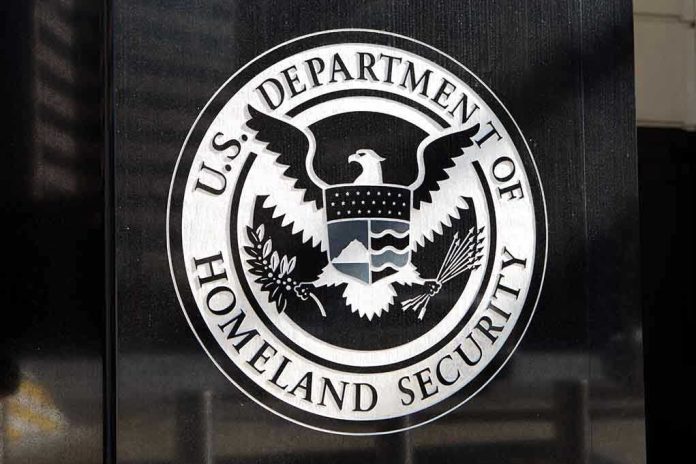
The federal government is finally yanking the “temporary” welcome mat from under tens of thousands of Hondurans and Nicaraguans—a group whose presence was only supposed to last a few years, but after a quarter-century, begs the question: when does “temporary” actually mean “forever” in Washington?
At a Glance
- More than 80,000 Honduran and Nicaraguan nationals set to lose Temporary Protected Status after living in the U.S. for over 25 years.
- The Trump administration’s move to terminate TPS for these groups reignited debates about border security, legal versus illegal status, and the ever-shifting nature of “humanitarian” programs.
- Biden’s White House reversed course in 2023, handing out yet another extension—while border communities and taxpayers foot the bill.
- Congress remains gridlocked, with no permanent solution or end in sight, as the same failed immigration debates rage on.
A Quarter-Century of “Temporary”: The Never-Ending Status Game
For those who thought the word “temporary” meant what it says, welcome to the magical world of federal immigration programs. Temporary Protected Status, or TPS, was created in 1990 as a way to help people fleeing disaster or war—noble on paper, but in practice, it’s become the government’s favorite loophole for indefinite stays. After Hurricane Mitch decimated Honduras and Nicaragua in 1998, the U.S. opened its doors to more than 100,000 migrants from those countries, promising a short-term reprieve. Fast forward to 2025, and here we are: the same “temporary” guests have been living, working, and raising families in the U.S. for 25 years while taxpayers and communities shoulder the cost.
The Trump administration, in what many saw as a rare moment of common sense, announced the end of TPS for Hondurans and Nicaraguans back in 2017. Their rationale? The original disaster was long over, and it was time for these migrants to return home and rebuild their own countries. But, as usual, lawsuits and advocacy groups flooded the courts, stalling enforcement and keeping the status quo alive. The Biden administration then swooped in, tossing out Trump’s policy and granting another 18-month extension. The result: the “temporary” label has officially lost all meaning—except, of course, for the Americans expected to pay for it.
The Political Tug-of-War: Who’s Actually in Charge?
Department of Homeland Security sets the rules, but the real battle happens in the White House and Congress. President Trump’s executive orders in 2025 have already triggered sweeping changes on the southern border, drastically lowering illegal crossings and restoring some semblance of order—at least for now. Meanwhile, the Biden administration’s legacy is one of constant reversals, endless “emergency” extensions, and prioritizing non-citizens over American citizens. Congress, as always, is locked in a stalemate, unable to pass even the most basic reforms to clarify what the future holds for TPS recipients or the border as a whole.
The real losers? Everyday Americans who watch as resources get funneled toward programs designed to never end. Employers in industries like construction and agriculture have grown dependent on cheap TPS labor, while cities and local governments struggle with the social and economic costs. Central American governments, for their part, rely on the billions in remittances sent home by their citizens who remain here indefinitely, making them eager to keep the gravy train rolling.
Impact and Outrage: The Human Cost of Endless Extensions
TPS recipients and their families face ongoing uncertainty—never knowing if the next administration will finally enforce the law or cave to activist pressure. On the other hand, American citizens are left wondering why their government can’t seem to prioritize them over foreign nationals who arrived under a “temporary” label. The economic impact is significant: should the program finally end, industries could lose tens of thousands of workers, but the cost of continuing the program falls on taxpayers who never voted for this arrangement.
Legal experts point out that TPS was never meant to be a path to permanent residence, but after two decades of bureaucratic inertia, it’s clear that Washington has no appetite for tough decisions. Advocacy groups, meanwhile, paint any attempt to enforce the law as cruel or anti-immigrant, weaponizing humanitarian rhetoric to keep the program alive. The irony is staggering: the longer the government delays, the more entrenched and intractable the problem becomes.
The Bottom Line: What Does “Temporary” Mean in America Anymore?
After 25 years, the only thing “temporary” about TPS is the government’s willingness to actually enforce its own deadlines. The Trump administration’s push to end the program was met with predictable outrage from the usual suspects, but at least it acknowledged that the law means something. The Biden administration’s extensions only perpetuate the status quo, kicking the can further down the road while American citizens wait for their leaders to remember who they serve. The next showdown is set for July 2025, when the latest TPS extension for Nicaraguans expires—but don’t hold your breath for any real change. If history is any guide, the “temporary” in Temporary Protected Status is just another Washington punchline.







